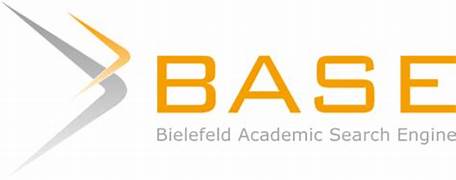Association of Gender and Body Mass Index With Hemorrhoid Recurrence at Pelambuan Public Health Center, Banjarmasin
DOI:
https://doi.org/10.64141/pmhs.v2i1.26Keywords:
Hemorrhoids, Body Mass Index (BMI), Gender, RecurrenceAbstract
Non-communicable diseases are a major health burden in developing countries, one of which is hemorrhoids. Hemorrhoids are abnormal anorectal conditions commonly characterized by anal bleeding. Hemorrhoids have the highest recurrence rate among anorectal disorders. Various factors may contribute to hemorrhoid recurrence, including gender and body mass index (BMI). In males, hemorrhoids may be caused by more intense physical activity, while in females, they may be influenced by the hormone progesterone, which inhibits contractions in the digestive tract. Excess BMI or body fat levels can lead to increased intra-abdominal pressure, which is considered a contributing factor to hemorrhoid recurrence. This study aimed to determine the association of gender and body mass index with hemorrhoid recurrence at Pelambuan Public Health Center, Banjarmasin. A correlational analytical design with a cross-sectional approach was employed, involving total sampling of 83 respondents with a history of hemorrhoids. Data were collected using a questionnaire. Analysis using the Chi-Square statistical test showed a significant association between gender and hemorrhoid recurrence (p = 0.035 < α = 0.05), as well as between body mass index and hemorrhoid recurrence (p = 0.001 < α = 0.05). It is concluded that gender and body mass index are significantly associated with hemorrhoid recurrence. Hemorrhoid sufferers are advised to maintain regular physical activity, a healthy body weight, nutritious eating habits, and avoid excess fat accumulation as preventive measures against recurrence.
References
Aghni Haunan, A. Z., Dian Lestari, R., & Sulistyowati, E. (2021). Beban kerja, usia, dan indeks massa tubuh menjadi faktor risiko kejadian low back pain dan gejala hemoroid pada buruh angkut di Kabupaten Malang.
Apriza, R., & Abdullah, D. (2022). Karakteristik pasien hemorrhoid di bagian bedah digestif RSI Siti Rahmah Padang periode Januari–Desember. Jurnal Kesehatan Saintika Meditory. https://jurnal.syedzasaintika.ac.id
De Marco, S., & Tiso, D. (2021). Lifestyle and risk factors in hemorrhoidal disease. Frontiers in Surgery, 8. Frontiers Media S.A. https://doi.org/10.3389/fsurg.2021.729166
Elia Abdians, A., & Maelissa, R. (2023). Hemoroid interna grade IV: Laporan kasus [Grade IV internal hemorrhoids: Case report]. Jurnal Medical Profession (MedPro), 5(3).
Erianto, M., Wulandari, M., Prasetia, T., & Pebrianti, A. (2022). Hubungan faktor usia lansia pada kejadian hemoroid di Rumah Sakit Pertamina Bintang Amin tahun 2017–2019. Mahesa: Malahayati Health Student Journal, 2(1), 116–123. https://doi.org/10.33024/mahesa.v2i1.4053
Fanany, M. A., Susana, E. N., & Nova, A. D. (2024). Hubungan usia, jenis kelamin dan indeks massa tubuh terhadap derajat keparahan hemoroid interna pada pasien hemoroidektomi. Zona Kedokteran, 14(1).
Hadni, N. S., Oktaviyanti, I. K., Rosida, L., Wibowo, A. A., & Yuliana, I. (2023). Hubungan usia dan jenis kelamin dengan derajat keparahan hemoroid interna.
Helen, K., Pradiantini, Y., Gede, I., & Dinata, S. (2021). Diagnosis dan penatalaksanaan hemoroid. Ganesha Medicina Journal, 1.
Kemenkes RI. (2018). Laporan Riskesdas 2018 Nasional.
Kemenkes RI. (2023). Pedoman Nasional Pelayanan Kedokteran Tata Laksana Perdarahan Saluran Cerna.
Kemenkes RI. (2024). Hemorrhoids: Diagnosis and treatment options.
Lohsiriwat, V., Sheikh, P., Bandolon, R., Ren, D. L., Roslani, A. C., Schaible, K., Freitag, A., Martin, M., Yaltirik, P., & Godeberge, P. (2023). Recurrence rates and pharmacological treatment for hemorrhoidal disease: A systematic review. Advances in Therapy, 40(1), 117–132. Adis. https://doi.org/10.1007/s12325-022-02351-7
Naik, G. S., Waikar, S. S., Johnson, A. E. W., Buchbinder, E. I., Haq, R., Hodi, F. S., Schoenfeld, J. D., & Ott, P. A. (2019a). Complex inter-relationship of body mass index, gender and serum creatinine on survival: Exploring the obesity paradox in melanoma patients treated with checkpoint inhibition. Journal for Immunotherapy of Cancer, 7(1). https://doi.org/10.1186/s40425-019-0512-5
Naik, G. S., Waikar, S. S., Johnson, A. E. W., Buchbinder, E. I., Haq, R., Hodi, F. S., Schoenfeld, J. D., & Ott, P. A. (2019b). Complex inter-relationship of body mass index, gender and serum creatinine on survival: Exploring the obesity paradox in melanoma patients treated with checkpoint inhibition. Journal for Immunotherapy of Cancer, 7(1). https://doi.org/10.1186/s40425-019-0512-5
NIH. (2023). BMI classification percentile and cut-off points.
Putri, K., Oktaviani, K. I., Rosida, L., Wibowo, A. A., & Ulfah, M. (2022). Hubungan obesitas dan konstipasi... [Incomplete title—needs clarification].
Rifki, M., Rusdani, & Eryaningrum, N. (2024). Based on gender. Zona Kedokteran, 14(1).
Robby Amsriza, F., Fakhriani, R., Ilmu Bedah, B., Kedokteran dan Ilmu Kesehatan Universitas Muhammadiyah Yogyakarta, F., Ilmu Kesehatan Telinga Hidung Tenggorok, B., & Fakhriani, R. (2021). Laporan kasus: Metode kombinasi modifikasi ligasi rubber band dan injeksi sklerotik pada hemoroid derajat 1 dengan menggunakan Paran Injection Ligation for Ambeien Pack (Pila Pack). Medica Arteriana (Med-Art).
Shella, M., Robles, D., Christopher, D., & Young, J. (2021). Teknik pembedahan merupakan prediktor utama kekambuhan dalam penanganan hemoroid. https://doi.org/10.1111/jawaban.16738
Sugiyono. (2017). Metode penelitian kuantitatif, kualitatif dan R&D. Bandung: Alfabeta.
Tuamelly, J., Serdi, P. I., Kailola, N. E., Glovrig Siahaya, P., & Tuahuns, A. (2023). Efektivitas penatalaksanaan hemoroid dengan Paran Injection Ligation for Ambeien (PILA) dan hemoroidektomi. Medpro, 5(2).
Ulandari, K. S., Nyoman, A. N. N., & Oka, D. I. G. S. (2023). Hubungan usia, pekerjaan, dan jenis kelamin. [Incomplete source—please verify journal or volume].
Utomo, D. F. (2020). Hubungan usia dan jenis kelamin terhadap derajat hemoroid internal.
Wang, L., Ni, J., Hou, C., Wu, D., Sun, L., Jiang, Q., Cai, Z., & Fan, W. (2023). Time to change? Present and prospects of hemorrhoidal classification. Frontiers in Medicine, 10. Frontiers Media S.A. https://doi.org/10.3389/fmed.2023.1252468
Widowati, F. S., & Ernawati, E. (2023). Faktor risiko kejadian hemoroid pada pekerja usia produktif. Jurnal Ilmu Kesehatan Masyarakat, 12(4), 277–282. https://doi.org/10.33221/jikm.v12i04.2092
World Health Organization. (2023). Global burden of anorectal disorders: A systematic analysis for the Global Burden of Disease Study 2023.
Yam, J. H., & Taufik, R. (2021). Hipotesis penelitian kuantitatif. Perspektif: Jurnal Ilmu Administrasi, 3(2), 96-102.
Downloads
Published
How to Cite
Issue
License
Copyright (c) 2025 Siti Aisyah, Uni Afriyanti, Era Widia Sary, Dessy Hadriyanti

This work is licensed under a Creative Commons Attribution-ShareAlike 4.0 International License.
Licence Term
Licence

Copyright @2024 Papua Medicine and Health Science. This is an open-access article distributed under the terms of the licensed under a Creative Commons Attribution-ShareAlike 4.0 International License.
Most read articles by the same author(s)
- Irma Wati, Uni Afriyanti, Wika Rispudyani Rosefa, Era Widia Sary, The Relationship Between Constipation and Physical Activity and the Recurrence of Hemorrhoids in the Working Area of Pelambuan Public Health Center, Banjarmasin , Papua Medicine and Health Science: Vol. 2 No. 1 (2025): Vol. 2 No. 1 (Juni 2025) : Papua Medicine and Health Science
- Tjitra Marini, Uni Afriyanti, Yosra Sigit Pramono, Dessy Hadrianti, Factors Associated with the Incidence of Dyspepsia in the Working Area of Teluk Tiram Public Health Center, Banjarmasin City , Papua Medicine and Health Science: Vol. 2 No. 1 (2025): Vol. 2 No. 1 (Juni 2025) : Papua Medicine and Health Science














